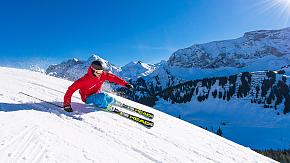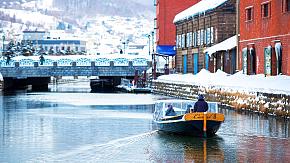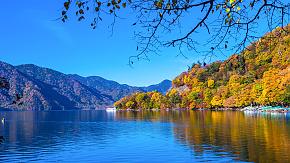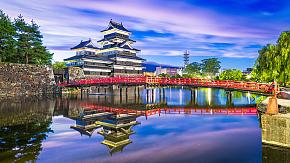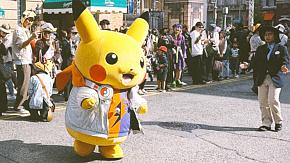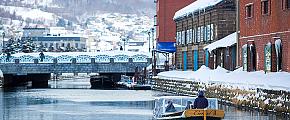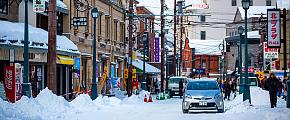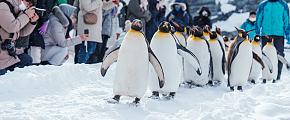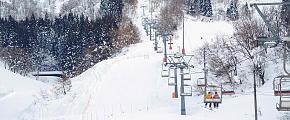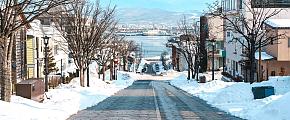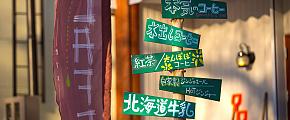Skiing in Japan 2025/2026: Ultimate Travel Guide
A Japan tour may bring you much more thrilling experiences when winter comes. Its thick snow and white-topped mountains make this island an excellent spot for skiing sports. The fabulous resorts, with vibrant forms of hopping events...Going on a winter skiing tour in Japan is worth a try, and here's a complete Japan ski travel guide to begin your exciting winter experience. Don't let the chance slip.

When to Ski in Japan
- Japan ski season: December to April
- Best time & peak season: January to February
- Off-peak season: December, March & April
The ski season in Japan typically runs from December to early April, though this can vary by location. For example, ski resorts in Hokkaido, due to their higher latitude, and in Nagano, with their higher altitude, often open earlier, around late November.
The best time to ski in Japan is generally between January and late February, which is also the peak season. This is when most resorts experience the heaviest snowfall and the softest, most powdery snow.
For international skiers looking to budget wisely and avoid crowds, early December or April can be great options. You'll still find good weather, soft snow, and more affordable lift tickets and accommodations during these times.
Spending a Japanese-style Christmas and New Year holiday with the excellent snow and trail is also a good idea; however, plan your itinerary and book rooms well in advance, as crowds and higher accommodation costs are common during this time.
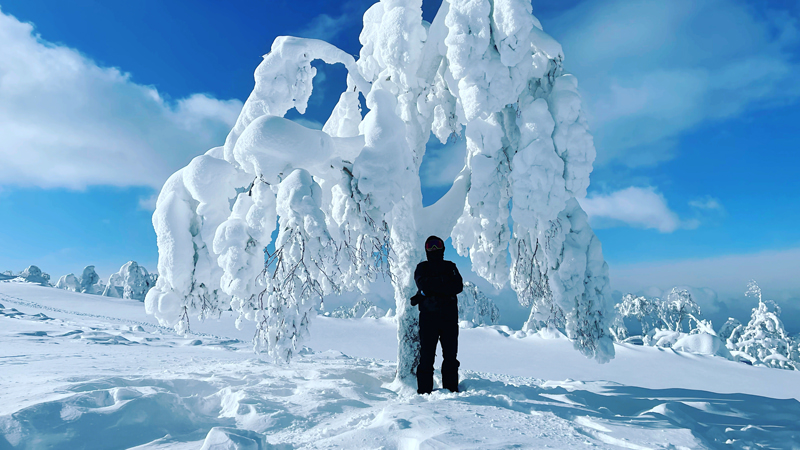 Heavy Snow During the Ski Season
Heavy Snow During the Ski Season
Where to Ski in Japan
Hokkaido: Niseko, Sapporo & Furano
Hokkaido, the northernmost part of Japan, is a well-known destination for skiing with the world's second-highest snowfall and deep powder snow. Besides, the area features mountains at a relatively low altitude, making Hokkaido a paradise for skiers of all abilities, from beginners to experts.
Places like Niseko, Rusutsu, Furano, and Sapporo are widely popular. Niseko United, the most famous ski resort in Hokkaido, offers a wide range of options, while Furano Ski Resort is known for its family-friendly atmosphere. Sapporo Teine, easily accessible from Sapporo, is another great choice.
Chubu: Nagano & Niigata
With their steep terrain and abundant snowfall, the Japanese Alps, also known as the "Roof of Japan," are a legendary destination for skiing and snowboarding. Most importantly, the area is easily accessible from Tokyo, making the ski resorts in Nagano and Niigata a popular choice for day trips.
Full of vibrant festivals and rural culture, Nagano hosted the 1998 Winter Olympics and is home to many major ski resorts, such as Nozawa Onsen, Shiga Kogen, and Hakuba Valley, which consists of 10 ski resorts. Some of these offer over 8 thousand meters of slopes.
Tohoku: Akita, Iwate & Yamagata
Renowned for its stunning natural beauty, well-known places to ski in the Tohoku region include Akita, Iwate, and Yamagata. With its mountainous terrain and proximity to the Sea of Japan, Tohoku is blessed with an abundance of dry snow formed by cold winter storms and warm sea air.
Compared to those resorts in Hokkaido, Tohoku is a hidden gem for skiing with relatively lower crowds and a quiet atmosphere. You can choose what you like among ski resorts in Tohoku, such as Zao Onsen Resort in Yamagata, Appi Kogen Resort in Iwate, and Tazawako Resort in Akita.
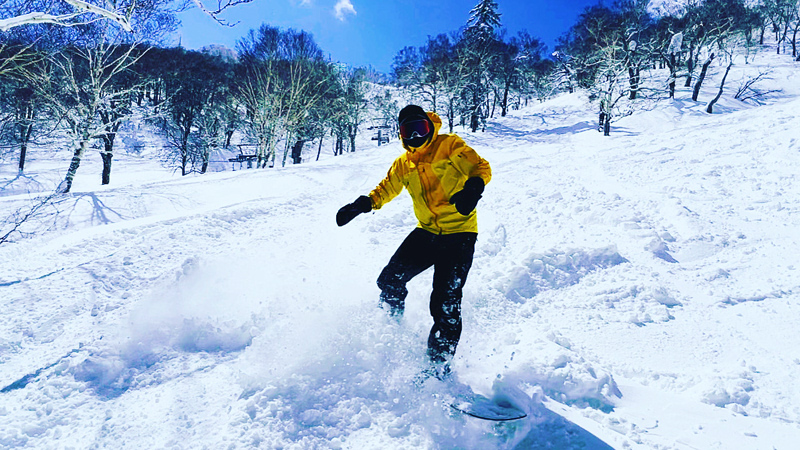 Skiing in Japan
Skiing in Japan
Best Ski Resorts in Japan
Niseko United, Hokkaido
- Opening: November 29, 2025 - May 6, 2026
- Location: Niseko, Abuta, Hokkaido (about a 2-hour drive from Sapporo)
- Best for: lively international atmosphere, night-skiing, first-timers
Niseko United is one of Japan's most popular ski destinations, renowned for its excellent powder and diverse trails suitable for all skill levels.
It has become a top choice for international skiers and snowboarders, with English widely spoken and lessons and guides easily accessible.
As a ski-in, ski-out resort, Niseko offers convenient transportation via lift ropeways, allowing quick access to the slopes. The resort also features numerous facilities, including restaurants, bars, and shops, making it a lively spot with vibrant nightlife and thrilling night skiing.
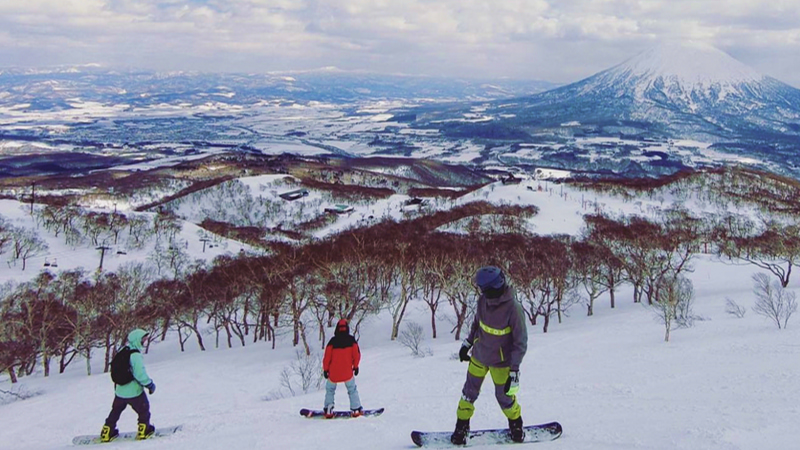 View of Mount Yotei from Niseko Resort
View of Mount Yotei from Niseko Resort
Rusutsu Ski Resort, Hokkaido
- Opening: November 29, 2025 - March 31, 2026
- Location: Rusutsu, Abuta, Hokkaido (about a 1.5-hour drive from Sapporo)
- Best for: family visitors, tree skiing fans, quieter powder options
Located near Niseko, Rusutsu Ski Resort is another excellent destination for a memorable winter vacation in Hokkaido. Known for its abundant annual snowfall, Rusutsu enjoys a reputation for fresh, deep powder.
The resort features well-maintained terrain, untouched slopes, and tree-lined trails covered in pristine snow. It also offers beginner and intermediate skiers access to trained instructors, ensuring a better experience for those new to the sport.
With shuttle buses and cars available, as well as many nearby hotels, you can easily extend your stay. For those looking for a quieter alternative to Niseko, Rusutsu may be the perfect choice.
Hakuba Valley, Nagano
- Opening: November 29, 2025 - May 6, 2026
- Location: Hakuba, Kitaazumi, Nagano (about a 1-hour drive from Nagano)
- Best for: wide terrain diversity, skiers with mixed levels, and combining Tokyo access
Hakuba Valley is a vast area home to 10 diverse ski resorts, offering a wide range of off-piste options, advanced terrain, and trails of varying lengths, including famous Olympic race courses.
Happo One Ski Resort gained international recognition during the 1998 Nagano Winter Olympics, it is now the largest and most popular ski destination in Hakuba Valley.
The resorts in Hakuba Valley also cater to beginners with extensive instruction. There are also plenty of accommodations, amenities, as well as ample shopping opportunities. For a lively après-ski scene, consider staying in Happo Village, where you can find ski gear and souvenirs. However, be prepared for large crowds on weekends and holidays.
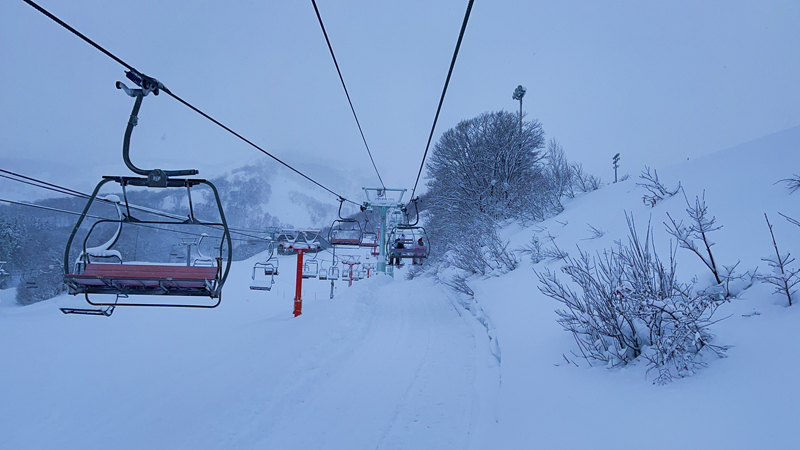 Handy Ski Lifts in Hakuba Valley
Handy Ski Lifts in Hakuba Valley
Nozawa Onsen, Nagano
- Opening: December 20, 2025 - March 29, 2026
- Location: Hakuba, Shimotakai, Nagano (about a 1-hour drive from Nagano)
- Best for: classic Japanese ski-village experience, hot springs lovers, cultural and historic vibe
Nozawa Onsen, easily accessible from Tokyo, features vast mountain terrain with reliable powder, tree-lined trails, and well-groomed slopes.
True to its name, the resort is renowned for its unique hot springs, offering 13 free public bathhouses, perfect for unwinding after a day of skiing.
In addition to the onsen, the resort boasts a variety of restaurants, bars, and karaoke spots. For families, an amusement park provides free weekend admission for children, with activities like tubing, slides, sledding, and bouncy castles. This family-friendly resort blends excitement with the tranquil charm of traditional Japan.
How to Get There
Skiing in Hokkaido
The most convenient way is to take a direct flight from Tokyo or Osaka to Hokkaido, which usually takes around 2 hours to get you to snowy Sapporo. A further 2-hour drive from the airport will take you to most of the resorts, including Niseko United and Rusutsu Resort.
Skiing in Nagano
Not far from Tokyo, you can begin your winter holiday in Nagano with a 3-hour drive from the city or opt for the Shinkansen bullet train, which is about 30 minutes faster to Nagano Station. From there, it's an additional 1-hour drive to reach the ski resorts.
Skiing in Tohoku
Skiing in the Tohoku region is also very convenient. A 1-hour flight from Tokyo will take you to Akita or Yamagata, from where you can take the Shinkansen to other cities such as Iwate. Ski resorts are about 30 minutes or 1 hour away for your winter fun.
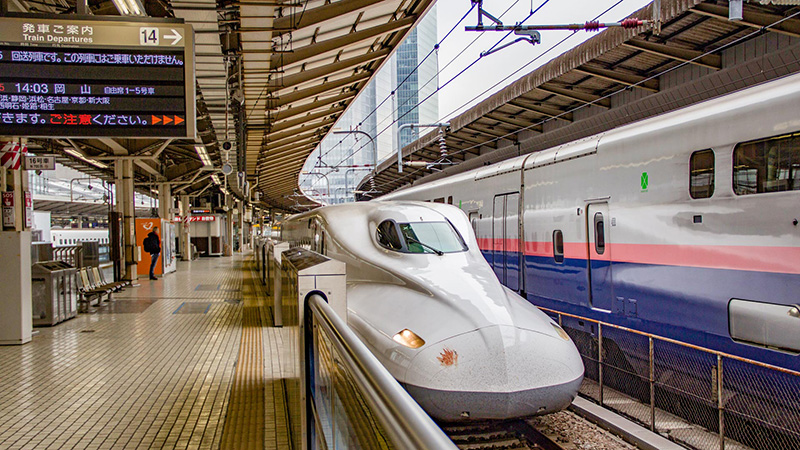 Shinkansen Bullet Train
Shinkansen Bullet Train
How Much Does It Cost to Ski in Japan
| Cost | |
| Ski Lift Tickets | About 4,000 yen to 5,000 yen per Day ≈ 33USD |
| Ski Gear Rental | About 3,000 yen to 5,000 yen per Set ≈ 33USD |
| Accommodation | About 5,000 yen per Night ≈ 33USD |
| Food | About 2,000 yen per Person ≈ 13USD |
| Ski Lesson | About 20,000 yen per Hour ≈ 130USD |
What to Expect When Skiing in Japan
Sapporo Snow Festival
If you come to go skiing in Hokkaido in early February (4th to 11th February 2026), you can't miss the Sapporo Snow Festival. This one-of-a-kind snow festival will bring you a big thrill, including a spectacular winter wonderland of snow, attractive snow and ice sculptures, and other interesting games like curling, snow slides, and a maze.
Onsen Hot Spring Baths
A traditional Onsen hot spring bath is a must after your skiing. It is one of the best ways to relieve fatigue and soreness. Many resorts have their own onsens in distinct Japanese styles. It is a wonderful pleasure to end a hard day with relaxing baths in a tranquil and antique atmosphere.
Snow Monkey Park
Also known as Jigokudani Monkey Park, is one of the world-famous attractions in Nagano. Exploring the park and witnessing snow monkeys bathe in hot springs can be a memorable part of your ski trip in Japan, where you can watch these adorable animals warming themselves up in onsen and take some pictures of the special scene.
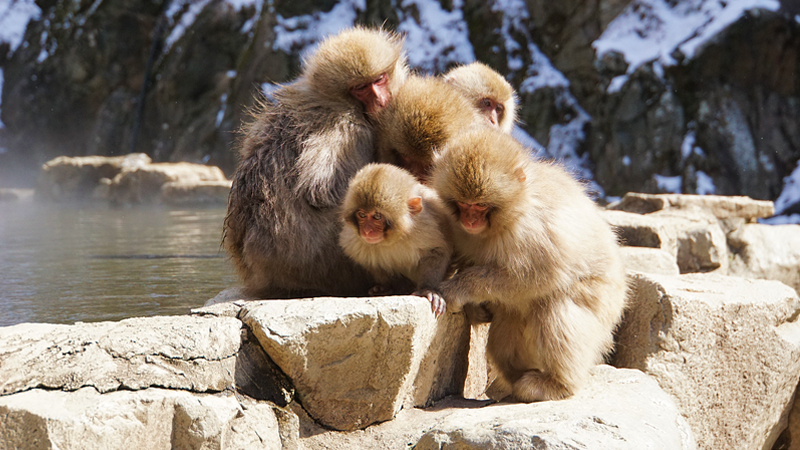 Cute Snow Monkeys
Cute Snow Monkeys
Zenkoji Temple
Nagano Zenkoji Temple is best known for storing Japan's first Buddhist statue, which traces back to the 6th century. The time-honored temple has many unique temples and castle structures to explore. It provides a chance to learn about a part of Japanese history while enjoying skiing.
Itinerary Ideas to Plan Your Skiing Tour in Japan
Classic Ski & Culture Combo around Japan Alps
Tokyo → Nagano/Niigata → (Kanazawa/Shirakawago/Tateyama) → Tokyo
Spend 1 to 2 days exploring the city's contrasts, from the neon skyline of Shinjuku to the serenity of Meiji Shrine or Asakusa's Senso-ji Temple, before heading toward the snow fields.
Take the Shinkansen bullet train toward the Japanese Alps in just 1.5 to 3 hours. Along the way, make a stop at Jigokudani Snow Monkey Park, where wild macaques soak in natural hot springs.
After a few days of skiing, unwind in a ryokan, soaking in the onsen and tasting regional sake, which is the heart of the Japanese winter experience.
Beyond the slope, you can return to Tokyo for relaxation, or if your schedule allows, extend the journey to explore Kanazawa (samurai districts and art museums) and Shirakawa-go (UNESCO thatched villages blanketed in snow). Adventurous travelers might even continue to Tateyama Kurobe Alpine Route, where you can walk between towering snow walls that remain until spring.
Hokkaido Pure Powder & Winter Festivals
Tokyo → Sapporo → Noboribetsu/Abashiri/Kushiro → Sapporo
If your goal is chasing the lightest snow on Earth, fly north to Hokkaido. Start in Sapporo, the island's lively capital, and use it as your base to explore the surrounding resorts: make your day trips to Otaru and Furano, and pack your winter calendar with magic like the Sapporo Snow Festival and the Otaru Snow Light Path Festival for more snow and ice fun.
After skiing, treat yourself to a night or two at Noboribetsu or Jozankei Onsen, where you can soak outdoors while snowflakes fall around you. And with more extra time, travel east to Abashiri for an unforgettable wild winter journey with drift ice and an icebreaker cruise. Further southeast, in the Kushiro Marshlands, elegant red-crowned cranes perform their famous mating dances against the snow, a true once-in-a-lifetime sight for wildlife lovers and photographers.
Rules & Etiquette Tips for Skiing in Japan
- Whether you're a beginner or an experienced skier, it's important to follow the signs and warnings provided by staff.
- Yield to others when merging onto a trail or starting downhill.
- If you fall, try to land sideways rather than sitting down directly to minimize impact.
- Even though ski resorts are cold, avoid overdressing to prevent excessive sweating, which could lead to catching a cold after skiing.
- You are expected to bathe in an onsen without a swimsuit. Thoroughly clean yourself with soap and a shower before entering the hot springs.
- As a risky activity, insurance is essential for skiing.
- Some Japanese phrases that you can use for fear of an emergency or special need:
Ski in Japan With Odynovo
The perfect snow conditions make Japan a significant destination for passionate skiers worldwide, with numerous ski resorts and diverse types of skiing activities to choose from, whether you're a beginner or an expert. By following this ski travel guide or contact us at [email protected] to make your customized winter events in Japan with Odynovo.
Related Posts You May Like
What Our Clients Say
Explore the latest verified reviews of Odynovo's travel services on Tripadvisor, Google, Trustpilot, Product Review and more trusted platforms.

